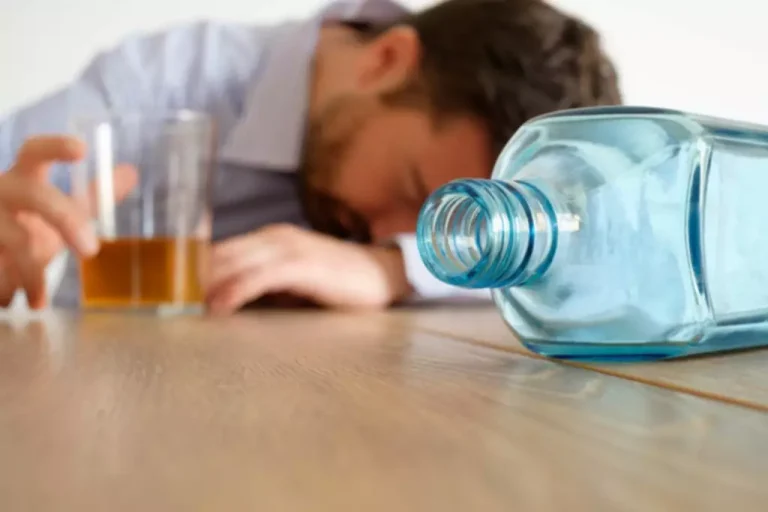
Through empathy and understanding, you can be a powerful ally to friends and family with mental health concerns. When a peer admits they have a mental health issue, take the time to help them access quality information about their disorder and help them work through coping strategies if needed. Resisting peer pressure starts with simply saying “no” and offering your reasons for refusing. You can also take your own drinks to social gatherings — people will be less likely to offer you a drink if you already have one. Symptoms of depression include anxiety, a lack of focus, sadness, sleep disorders, and social isolation, among others.
- However, the number of non–binge drinkers decreased, whereas the number of frequent binge drinkers (three or more binge-drinking episodes in a 2-week period) increased.
- Students who identified as white, cisfemale, transgender, gender-nonconforming, or of higher socioeconomic status, as well as those living with roommates, attending four-year institutions, or participating in Greek life or intercollegiate athletics, were at greater risk.
- Responses were coded at the midpoint of each response category e.g., 2–3 hours was recoded to 2.5 hours21, and the highest response option of 10+ hours was coded as 10 hours.
College student status and alcohol use

The difference between the college student and noncollege populations appears relatively small; in how does alcohol affect relationships the National Epidemiologic Survey on Alcohol and Related Conditions, the 12-month prevalence of heavy episodic drinking was 42.6% among college students and 38.1% among noncollege individuals (Dawson et al., 2004). Indeed, in several studies, the student-status difference has failed to reach statistical significance (Lanza and Collins, 2006; White et al., 2005). Additionally, there are conflicting findings regarding differences in the consequences of alcohol use (e.g., alcohol use disorders; Dawson et al., 2004; Slutske, 2005), and some evidence actually suggests that college students may experience fewer alcohol-related problems (White et al., 2005).
- It should be noted, however, that BAC levels calculated based on self-reported consumption are unlikely to be accurate given the presence of partial or complete amnesia during the drinking occasion.
- Differing patterns of alcohol use, its predictors, and its consequences emerged for the college and noncollege samples, suggesting that differing intervention strategies may best meet the needs of each population.
- White and colleagues (2008) demonstrated that descriptive norms predict alcohol use among noncollege emerging adults, but we are aware of no studies testing their contribution to college/ noncollege differences.
- The combined use of alcohol and other drugs peaks in the 18- to 24-year-old age range (McCabe et al. 2006), suggesting that college-aged young adults are at particularly high risk of suffering consequences from alcohol-and-other-drug combinations.
- Indeed, in several studies, the student-status difference has failed to reach statistical significance (Lanza and Collins, 2006; White et al., 2005).
- Further, in order for a person to know what transpired during a blackout, and sometimes to be aware that a blackout occurred at all, they need to be told by other individuals.
Additional eating disorder resources:
- Suffering from a psychotic disorder can be an alarming, stressful experience, but you can successfully navigate college by openly communicating your experiences with friends, family, your physician, and your school.
- When it comes to managing day-to-day life while attending college online, students need to prioritize their well-being.
- As such, attributable fractions, based on analyses of existing reports in which alcohol levels were measured postmortem, are used to estimate the number of deaths by various means that likely involved alcohol.
- Simply drinking too much alcohol is enough to require hospitalization and potentially cause death.
- Further, combining alcohol with other drugs can increase the risk of requiring medical intervention substantially.
If you know someone in this age range who is having this issue, consult mental health resources for teenagers. The disorder can be particularly debilitating for young adults looking to succeed in college, as it can lead them to make impulsive or damaging choices — such as dropping out of school in frustration or using drugs to cope. Unless the individual seeks out mental health resources to find a better balance, they can become overwhelmed.
- Despite concerns about the accuracy of self-report data for assessing levels of alcohol use among college students and the general population, such surveys remain the most common tool for assessing alcohol use.
- It seems that some people are more sensitive to the effects of alcohol on memory than others and are therefore at increased risk of experiencing blackouts.
- Percent of 12th-grade male and female students who reported drinking at least once in the prior 2 weeks.
- The Substance Abuse and Mental Health Services Administration (SAMHSA) has a National Helpline, included in the list below, that can be used to get referrals to local treatment facilities, support groups, and community-based organizations for additional assistance.
- College students were lower in trait-based risk for drinking, and accounting for traits revealed a stronger positive association between attending college and drinking more heavily.
- Wetherill and Fromme (2011) examined the effects of alcohol on contextual memory in college students with and without a history of blackouts.
Bipolar disorder

The study surveyed more than 1,900 students at 46 colleges and universities across the United States. Researchers found that 53.5 percent of students reported experiencing at least one harm caused by someone else’s drinking, ranging from verbal abuse and physical confrontations to academic disruptions and emotional distress. With regard to assessing the number of college students who die from alcohol each year, in addition to the lack of college identifiers in datasets, another barrier is the fact that levels of alcohol often are not measured in nontraffic fatalities.
If you live in a loud neighborhood or near roads with heavy traffic, for example, ear plugs may dramatically improve your sleep — just be sure your alarm is loud enough to wake you up before class. Restrictions may include specific types of food, alcoholism symptoms specific nutrients (such as carbs), or skipping certain meals of the day. Finally, in emergency situations where you feel like you are at risk for using, you can utilize a helpline. The Substance Abuse and Mental Health Services Administration (SAMHSA) has a National Helpline, included in the list below, that can be used to get referrals to local treatment facilities, support groups, and community-based organizations for additional assistance. Dealing with the root source of your anxiety is a much more effective way of finding peace than self-harm. If a traumatic memory is the cause of your desire to self-injure, you may be suffering from post-traumatic stress disorder.

In addition, two prior surveys yielded data on college drinking that remain valuable and relevant. The National Epidemiologic Survey on Alcohol and Related Conditions (NESARC), sponsored by NIAAA, collected data on alcohol and other drug use from a sample of roughly 46,500 citizens 18 and older using face-to-face computer-assisted interviews. Two waves of data (2001 and 2004) were collected from the same sample, and data from an independent sample are scheduled to be collected in 2013. The Harvard College Alcohol Study (CAS), although no longer active, was a landmark paper-and-pencil survey that provided national data (years 1993, 1997, 1999, and 2001) from roughly 15,000 students on more than 100 college campuses each year (Wechsler and Nelson 2008). Data from both NESARC and Harvard CAS remain useful for examining associations between patterns of drinking at college and the frequency and prevalence of alcohol-related consequences for both drinkers and nondrinkers.

